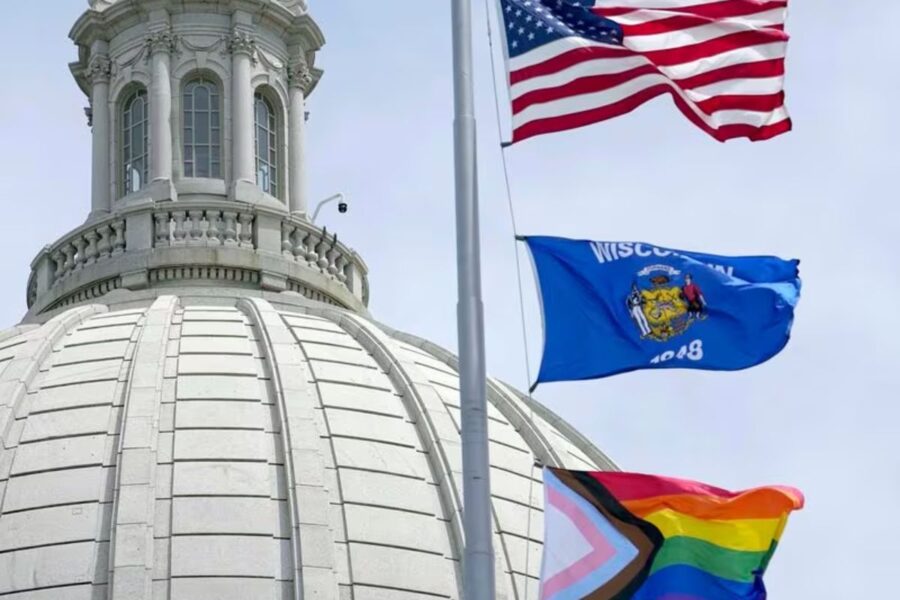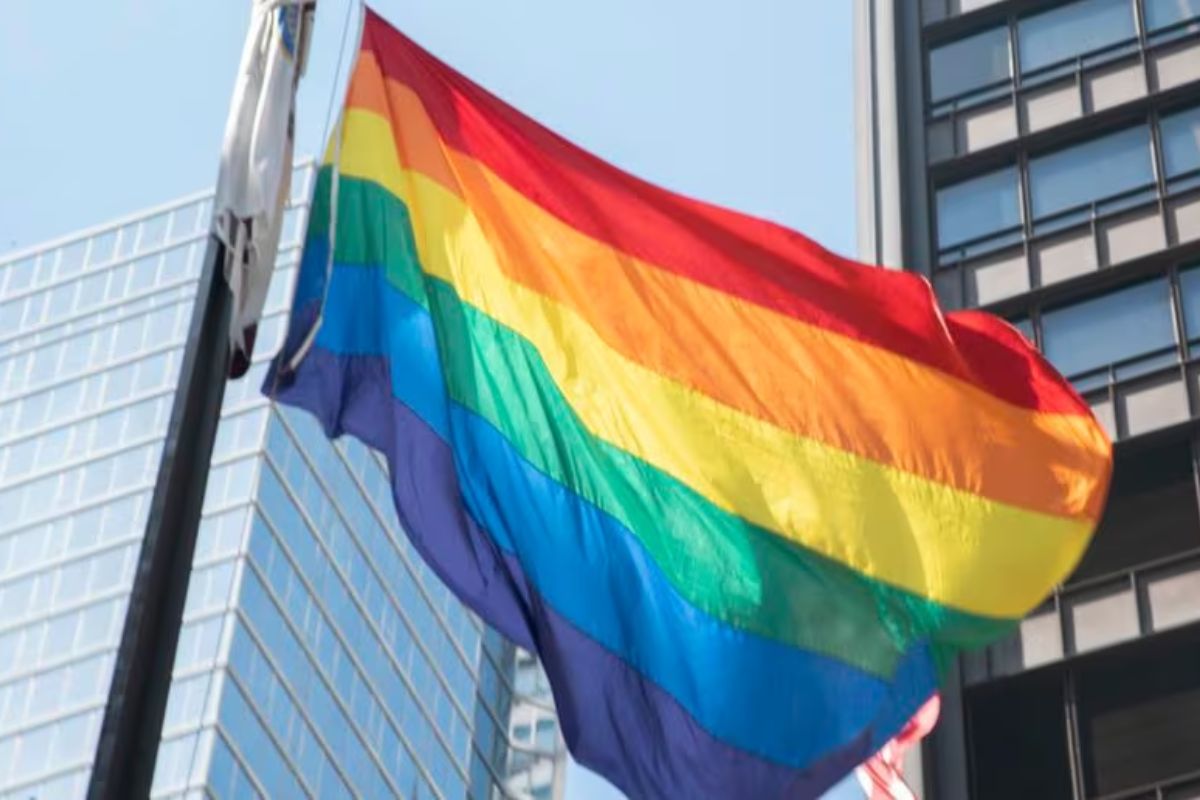Alabama Proposed Flag Legislation: The proposed flag legislation in Alabama has sparked intense debate and controversy surrounding the inclusion or exclusion of LGBTQ pride symbols.
Senate Bill 4, introduced by Senator Gerald Allen, aims to establish guidelines for flag displays on public properties. However, the bill’s exclusion of the LGBTQ pride flag has drawn criticism from activists and raised concerns about potential legal complexities and free speech implications.
The proposed legislation’s impact on LGBTQ pride symbols and its broader societal implications.
Key Takeaways
– Controversy surrounding Alabama’s proposed law SB4
– Exclusion of the LGBTQ pride flag in the legislation
– LGBTQ activists’ intense debate and criticisms
– Potential contradiction with the bill’s intent
Proposed Alabama Law SB4: Controversy Surrounding 9/11 Flag and Exclusion of LGBTQ Pride Flag
The controversy surrounding Alabama’s proposed law SB4 centers around the exclusion of the LGBTQ pride flag and the requirement to fly a 9/11 flag on public properties.
This legislation has sparked intense debate, particularly among LGBTQ activists who argue that the exclusion of the Rainbow Flag is discriminatory and sends a message of exclusion to the LGBTQ community. The proposed law has been criticized as part of a larger trend against LGBTQ rights and visibility.
Supporters of the legislation argue that the flying of a 9/11 flag is a way to honor the victims of the terrorist attacks and show patriotism. However, opponents argue that this requirement is unnecessary and that the exclusion of the LGBTQ pride flag is a clear example of discrimination.
The controversy highlights the ongoing struggle for LGBTQ rights and representation in society.


ALSO READ: Democrats in Alabama Legislature File Bills to Challenge Restrictive Abortion Laws
Senator Gerald Allen’s Intent and Bill Details: A Closer Look at SB4
Continuing the previous discussion on Alabama’s proposed law SB4, a closer examination of Senator Gerald Allen’s intent and the bill’s details reveals the potential impact on LGBTQ pride symbols.
While Senator Allen claims the primary purpose of the legislation is to honor 9/11, the bill does not require the display of the remembrance flag on public grounds on September 11. Instead, it allows for the display of various flags without approval, including the U.S. flag, Alabama state flag, and flags of recognized organizations.
However, the bill also includes an exception that permits the display of the ‘official flag of any nation or state that preceded’ the U.S. and Alabama, potentially opening the door for the display of Confederate flags. This raises concerns about the exclusion of LGBTQ pride symbols, as they may be interpreted as not fitting within the bill’s parameters.
– The vagueness of the bill’s language leaves room for interpretation and potential discrimination against LGBTQ pride symbols.
– The inclusion of an exception for flags that preceded the U.S. and Alabama suggests a possible acceptance of Confederate flags, while LGBTQ pride symbols are excluded.
– The bill’s focus on the display of certain flags undermines the recognition and visibility of LGBTQ individuals and their contributions.
Controversy Over Exclusion of LGBTQ Pride Flag: Activists’ Criticisms and Concerns
Activists have voiced their criticisms and concerns regarding the exclusion of the LGBTQ Pride flag in Alabama’s proposed flag legislation. They argue that this exclusion sends a message of discrimination and erasure, particularly in light of Senator Gerald Allen’s history of promoting socially conservative bills. The omission of the Pride flag from the approved flags list has been seen by activists as a deliberate attempt to marginalize and exclude the LGBTQ community. Activists also raise concerns about potential viewpoint discrimination, as the bill specifically targets the Rainbow Flag, which is widely associated with LGBTQ pride and visibility. By not including the LGBTQ Pride flag, the legislation risks perpetuating a culture of exclusion and inequality, while undermining the progress made towards LGBTQ acceptance and equality.
Legal Complexity and Potential Contradictions: Odd Clauses and Free Speech Implications
The legal complexity surrounding Alabama’s proposed flag legislation and its potential contradictions raise concerns about the implications for free speech and odd clauses that could impact LGBTQ pride symbols.
One odd clause highlighted by Ken Paulson, director of the Free Speech Center, is particularly worrisome. This clause could render the entire bill moot, allowing any flag to be flown on public property if approved by the entity.
Critics argue that this provision opens the door for the LGBTQ Pride flag to be displayed, contradicting the bill’s apparent intent. The inclusion of such an odd clause not only creates confusion but also raises questions about the government’s commitment to protecting free speech rights.
It further highlights the legal complexities and potential contradictions that could arise from the proposed flag legislation.

Nationwide Impact and Broader Societal Discussions: Flags on Public Properties and Free Speech
One consequence of Alabama’s proposed flag legislation is the potential impact on LGBTQ pride symbols, sparking nationwide discussions on flags displayed on public properties and free speech.
Similar bills in other states have already contributed to a heated debate over the flying of flags on public properties. Recent cases in cities like Green Bay, Huntington Beach, and Hamtramck have shown varying decisions on restricting flags, and legal challenges based on free speech and viewpoint discrimination have arisen as a result.
This ongoing debate highlights broader societal discussions on the delicate balance between historical recognition and contemporary values, as well as the importance of inclusivity and the protection of free speech rights.
The outcome of these discussions will have significant implications for the display of flags and symbols on public properties across the country.
Conclusion Of Alabama Proposed Flag Legislation
The proposed Alabama legislation, SB4, has sparked controversy surrounding the exclusion of the LGBTQ Pride flag and the inclusion of the 9/11 flag. Activists have criticized the bill for its potential infringement on free speech and its exclusionary nature.
The legal complexity of the bill, including odd clauses, further adds to the debate. The implications of this legislation reach beyond Alabama, sparking broader discussions about flags on public properties and the protection of free speech rights.
Our Reader’s Queries
What do the colors of the progress pride flag mean?
A year later, the city of Seattle in the United States expanded the rainbow flag by incorporating five additional colors. Black and brown were included to symbolize people of color, while pink, light blue, and white were added to represent the transgender, gender non-binary, intersex, and individuals across the gender spectrum.
What is the difference between rainbow and LGBT flag?
This is the current iteration of the Pride Flag, widely recognized as a symbol for the entire LGBTQIA+ community. In this version, pink and turquoise were omitted from the flag to facilitate mass production.
What is the symbol of the LGBTQ?
The rainbow is the most recognized symbol for the LGBTQ+ community, with its association with Pride tracing back to 1978 when Gilbert Baker created the original Pride flag.

